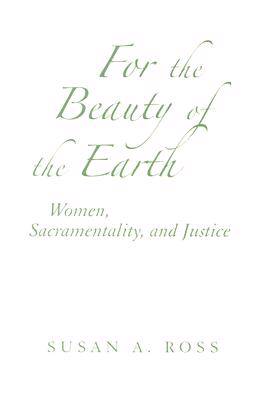
- Afhalen na 1 uur in een winkel met voorraad
- Gratis thuislevering in België vanaf € 30
- Ruim aanbod met 7 miljoen producten
- Afhalen na 1 uur in een winkel met voorraad
- Gratis thuislevering in België vanaf € 30
- Ruim aanbod met 7 miljoen producten
Zoeken
Omschrijving
Beauty has long posed problems for religion. While Christianity has celebrated God's incarnation in human flesh, physical beauty has nevertheless been suspect. Women in particular have been the objects of ecclesiastical suspicion with regard to their bodies and their beauty. They have been kept out of sanctuaries, denounced for their love of colorful clothing, feared as temptresses. Yet beauty has often been understood positively in feminine terms as well, not only by secular artists and philosophers but also by theologians. In this book, Susan A. Ross explores beauty "from the ground up," drawing on women's experiences of both physical beauty and deformity, the wonders of the natural world, clothes shopping, needlework, church hats, house-painting and basket-weaving. In all of these practices, women have shared their love of beauty with their families, churches, and communities, where it has been frequently trivialized as "women's work," or as simple "craft." The works of beauty that women have created over the centuries suggest that traditional aesthetic and theological categories of beauty are not only male-centered, but also falsely divide goodness and beauty. To love beauty is not to be distracted from the good, but to want to share it with the world. Women's practices of beauty show how we need not have to choose between beauty and goodness, bread and roses. +
Specificaties
Betrokkenen
- Auteur(s):
- Uitgeverij:
Inhoud
- Aantal bladzijden:
- 128
- Taal:
- Engels
- Reeks:
- Reeksnummer:
- nr. 2006
Eigenschappen
- Productcode (EAN):
- 9780809144228
- Verschijningsdatum:
- 1/11/2006
- Uitvoering:
- Paperback
- Formaat:
- Trade paperback (VS)
- Afmetingen:
- 115 mm x 171 mm
- Gewicht:
- 113 g

Alleen bij Standaard Boekhandel
+ 19 punten op je klantenkaart van Standaard Boekhandel
Beoordelingen
We publiceren alleen reviews die voldoen aan de voorwaarden voor reviews. Bekijk onze voorwaarden voor reviews.







